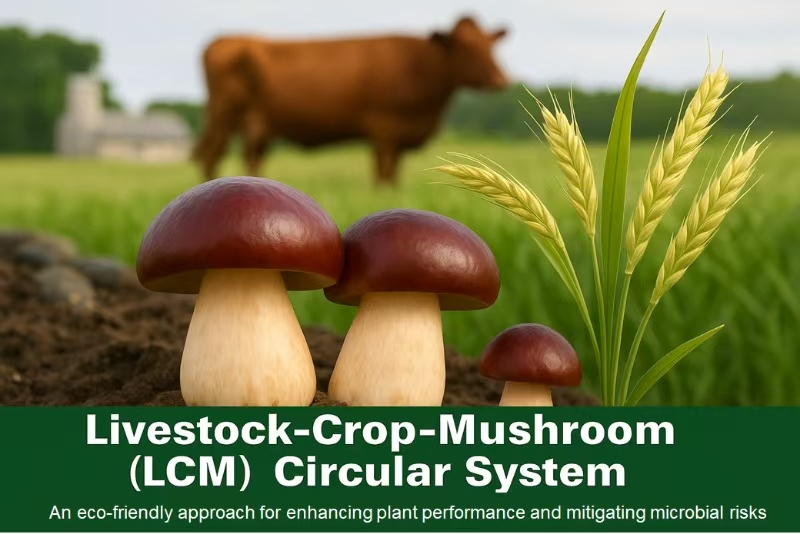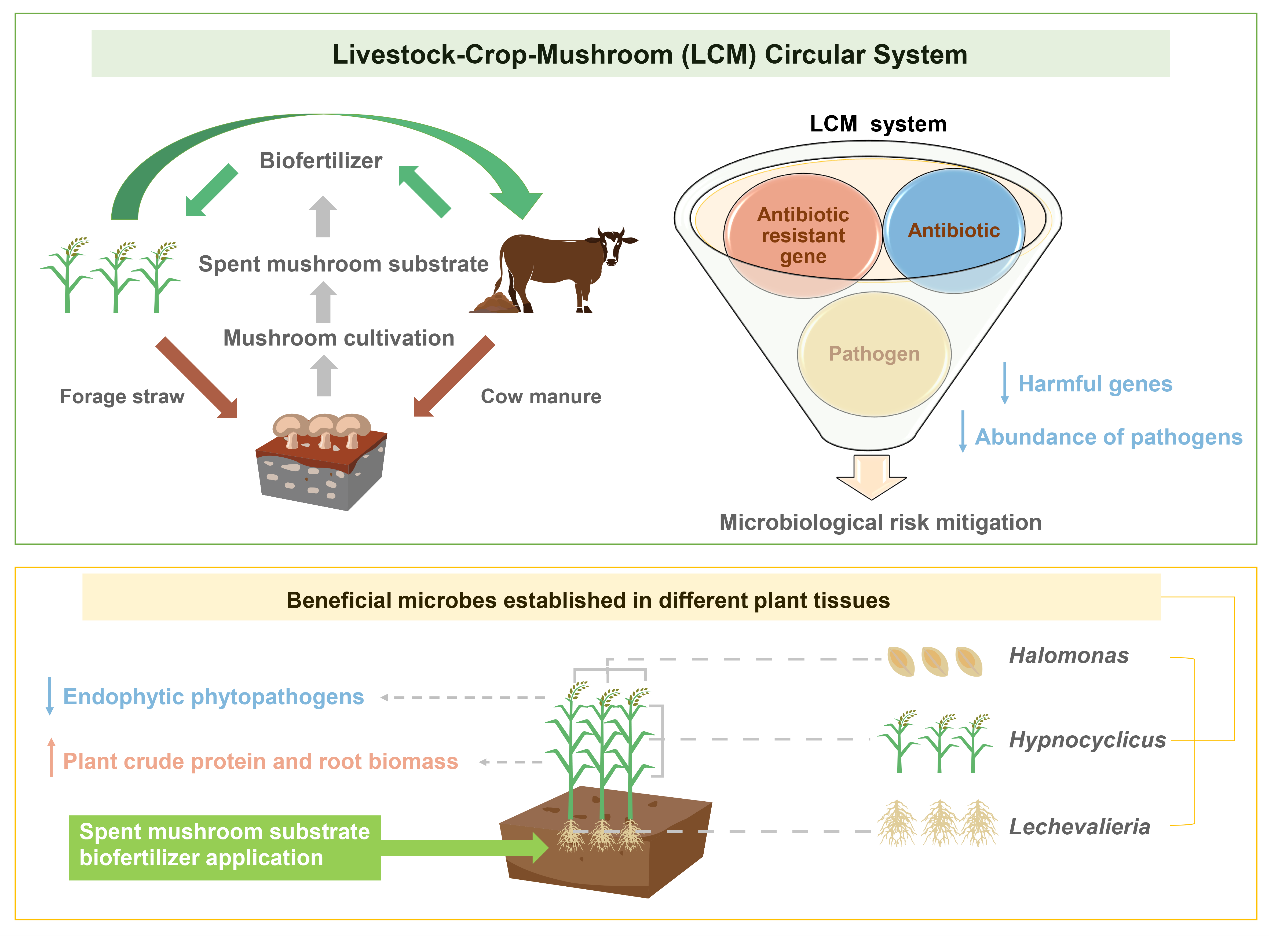With the intensification of global agriculture, the annual production of 14 billion tons of crop straw and 125 million tons of livestock manure poses a significant disposal challenge. Traditional composting technologies struggle to achieve safe and efficient utilization due to low lignocellulose degradation efficiency and residual pathogens and antibiotic resistance genes (ARGs).
Concurrently, long-term and extensive use of antibiotics such as oxytetracycline in livestock farming has exacerbated the transmission risks of ARGs and pathogens (e.g., Escherichia coli, Salmonella) in the soil-plant system, threatening agricultural product safety and ecological environments.

Image by KIB
Agricultural waste is both a 'pollutant source' and a 'resource pool.' How to use microbial conversion technology to connect crop straw, livestock manure, and spent mushroom substrates into a closed-loop system, addressing both the green and efficient utilization of agronomic organic matter and crop growth needs, is a key focus of the research group on germplasm resources of macrofungi and green development."

Figure 1. The Livestock-Crop-Mushroom (LCM) Circular System: An Environmentally Friendly Approach for Enhancing Plant Performance and Mitigating Microbiological Risks (Image by KIB)
Leveraging Yunnan’s abundant agronomic organic matter and fungal resources. The research team from Kunming Institute of Botany, Chinese Academy of Sciences (KIB/CAS) selected the rare edible mushroom Stropharia rugosoannulata as the core conversion medium to construct a Livestock-Crop-Mushroom (LCM) cross-domain circular system.
Through the pathway of "co-composting of straw and cow manure → mushroom cultivation → spent mushroom substrate reuse," the study investigated the regulatory effects of LCM end-products on oat growth and rhizosphere microecology. Comparative analyses of traditional compost (St, straw + cow manure) and spent mushroom substrate-amended compost (StM, St + spent mushroom substrate) on oats yielded following innovative findings. Spent mushroom substrate composting exerts multifaceted positive effects on the agricultural ecosystem.
It remodels the microbial community structure by enriching functional microbes and saprophytic fungi, which in turn inhibits pathogens, and significantly enhances plant growth performance through optimizing root development and nutrient utilization. Additionally, it substantially reduces organic pollutants like oxytetracycline residues in cow manure and pathogen abundance and ARGs in oats and soil, outperforming traditional composting methods.
Using multi-omics techniques (metagenomics, endophytic microbial sequencing) and functional gene analysis, this study for the first time clarifies the profound impacts of LCM biofertilizers on crop microbial communities across spatial compartments (rhizosphere-stem-seed). It provides an efficient solution for sustainable utilization of agronomic organic matter and a new pathway for regulating agricultural microbiological risks. With the advancement of the Rural Revitalization Strategy and "Double Carbon" goals, the LCM cross-domain circular system is poised to become an ideal model linking clean agronomic organic matter utilization, green crop yield enhancement, and environmental protection in farming regions.
The study titled "Livestock-Crop-Mushroom (LCM) Circular System: An Eco-Friendly Approach for Enhancing Plant Performance and Mitigating Microbiological Risks" was published in the Nature Index journal Environmental Science & Technology. LIU Dong is the first author, and YU Fuqiang is the corresponding author.
The research was supported by the Strategic Priority Research Program of the Chinese Academy of Sciences (Category A, XDA26050302), the Yunnan Province Talent Support Program for Young Scholars (YNQR-QNRC-2019-025), and the Yunnan Province Science and Technology Innovation Plan (202205AD160036).
Contact:
YANG Mei
General Office
Kunming Institute of Botany, CAS
email: yangmei@mail.kib.ac.cn
(Editor: YANG Mei)




